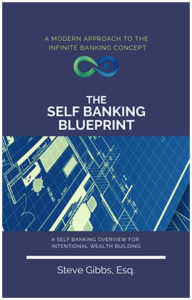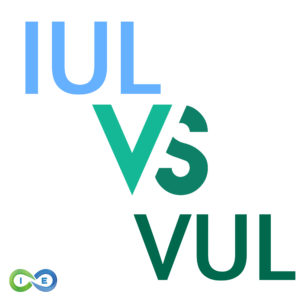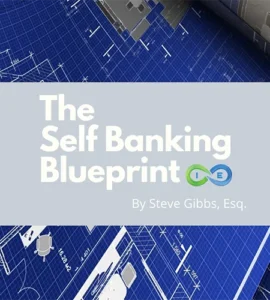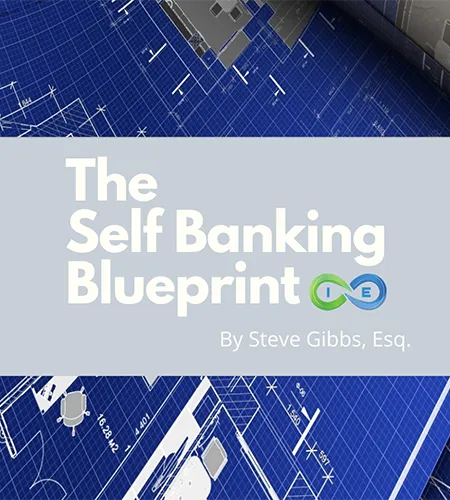By Jason Herring, IUL Specialist
The indexed universal life insurance market has entered a pivotal phase in 2025, driven by evolving market conditions, enhanced product innovations, and shifting regulatory frameworks. Rather than focusing solely on basic product features, this guide examines the strategic considerations for implementing IUL policies in today’s environment.
📖 Estimated read time: 20 minutes | 🎯 Comprehensive implementation guide
Quick Answer: IUL Implementation Strategy 2025
TL;DR: IUL success requires 3-4 year cash value build-up timeline, strategic index selection beyond S&P 500, and proper structuring with minimal death benefits. Focus on surrender cash value (not gross) for accurate planning. Best for tax-free retirement income seekers, not immediate liquidity needs.
Table of Contents
- Market Context: Why 2025 is a Unique Window for IUL
- Strategic Implementation Framework
- IUL Cash Value Timeline: When You Can Access Your Money
- Risk Mitigation Strategies
- Regulatory Compliance and Consumer Protection
- Business Applications and Advanced Strategies
- Case Study: Optimizing IUL for Retirement Income
- Implementation Timeline and Monitoring
- Future Outlook and Strategic Considerations
- Making the Strategic Decision
- Frequently Asked Questions
Key Insight
IUL insurance in 2025 offers downside protection and enhanced growth potential, but success hinges on strategic integration and realistic expectations.
Market Context: Why 2025 is a Unique Window for IUL
Current Challenge: Most IUL implementations fail due to unrealistic expectations about cash value accessibility and market mechanics. Solution: Strategic implementation requires understanding the 3-4 year cash value build-up period, how index linking actually works, and aligning policy structure with your specific financial timeline.
The convergence of several factors makes 2025 particularly significant for IUL consideration. Market volatility in early 2025 has highlighted the value proposition of downside protection, while enhanced index tracking mechanisms offer improved growth potential. Additionally, regulatory clarity from the NAIC’s Universal Life Insurance Model Regulation provides a more stable foundation for long-term planning.
Key Market Indicators Supporting IUL Growth:
- IUL represented nearly 25% of the U.S. life insurance market in 2024, with a 4% year-over-year increase
- LIMRA projects continued growth of 2-6% in 2025 premium volume
- Enhanced index options now provide more sophisticated risk-return profiles
🔑 Key Insight: Market Context
The 2025 environment creates optimal conditions for IUL implementation: market volatility validates downside protection, enhanced index options provide better risk-return profiles, and regulatory clarity offers stable long-term planning foundations.
Strategic Implementation Framework
Phase 1: Portfolio Integration Analysis and Cash Value Reality Check
Before adding IUL to your financial strategy, conduct a comprehensive analysis of how it integrates with existing assets. Unlike traditional insurance purchases, IUL should be evaluated as both a protection vehicle and an investment component.
Critical Cash Value Timing Considerations
Industry expert Jason Herring, who has designed thousands of IUL illustrations over 15 years, emphasizes a crucial distinction often overlooked in popular discussions: “If a client is coming to us and they want to look at an overfunded strategy, but they really need that cash value very quickly… Can’t always do that right away with an IUL.”
The key insight centers on understanding two distinct cash value buckets in universal life policies:
Gross Cash Value vs. Surrender Cash Value: Your policy statement may show $10,000 in gross cash value, but only $4,000 may be available as surrender cash value for loans. As Herring notes, “you can only borrow from your surrender cash value. That gross cash value doesn’t mean anything with regards to early loan opportunities,” although it is still important to the overall health of the IUL policy.
This reality fundamentally affects implementation strategy. If you need cash access within the first 1-2 years, whole life may be more appropriate despite IUL’s superior long-term growth potential.
🔢 Quick Facts: IUL Cash Value Reality
- Years 1-2: Only 40-60% of gross cash value available for loans
- Years 3-4: Meaningful surrender cash value becomes accessible
- Year 15+: Insurance costs can reduce by up to 95%
- Market Protection: 0% floor prevents losses during market downturns
Integration Considerations:
- Tax Diversification: IUL provides tax-deferred growth and tax-free loan access, complementing taxable investments and qualified retirement accounts
- Liquidity Laddering: Structure IUL alongside other assets to create a liquidity timeline that accounts for surrender charge periods. Plan for years 3-4 as the earliest practical cash access points for meaningful loan amounts
- Risk Correlation: Evaluate how IUL’s index-linked returns correlate with existing equity positions
- Cash Flow Timing: Determine if your strategy requires immediate liquidity (favoring whole life) or can accommodate the 3-4 year cash value build-up period (favoring IUL’s superior long-term potential)
🔑 Key Insight: Portfolio Integration
Success depends on understanding the surrender vs. gross cash value distinction and planning for the 3-4 year accessibility timeline. IUL works best when you don’t need immediate liquidity and can leverage its superior long-term tax advantages.
Phase 2: IUL Index Selection Strategy: S&P 500 vs Designer Indexes
The 2025 landscape offers sophisticated index options that go beyond simple S&P 500 tracking. However, strategic selection requires understanding both the opportunities and the marketing hype surrounding newer index options.
The Core Index Foundation
Jason Herring advocates starting with time-tested foundations: “I tended to favor the S&P 500 because it has the longest track record of history… a company sets some of their maximum illustrated rates inside these contracts based off of how that product would have performed if they did a 65 year look back on the S&P 500.”
Understanding Designer Indexes and Their Limitations
The industry has introduced numerous “designer indexes” with attractive features like 200% participation rates. While these can offer compelling returns, Herring cautions about their newness: “A lot of these indexes are very new… we actually have a carrier out there when they’re discussing these designer indexes, they actually use a term called actuarial judgment… we don’t have the data to look at.”
Critical Designer Index Considerations:
- Participation Rate Guarantees: High initial rates (200%+) may only be guaranteed at much lower levels (65%)
- Limited Historical Data: Many indexes rely on “actuarial judgment” rather than proven performance
- Rate Adjustment Risk: Like promotional rates from phone carriers, initial terms may change after the honeymoon period
Strategic Index Selection Approach:
- Foundation First: Evaluate carriers based on their S&P 500 performance history, then consider designer indexes as supplements
- Diversification Strategy: Use designer indexes to control volatility when S&P 500 experiences downturns, not as primary growth engines
- Guarantee Analysis: Focus on guaranteed participation rates rather than current promotional rates
Next-Generation Index Options with Strategic Context:
- Bloomberg U.S. Dynamic II ER Index: Employs dynamic allocation between equity and fixed income based on volatility measurements. This index adjusts exposure automatically, providing built-in risk management that traditional static indexes lack.
- PIMCO Tactical Balanced ER Index: Combines equity futures with synthetic bond positions, offering exposure to both asset classes while maintaining the liquidity needed for insurance applications. This approach provides more consistent returns across market cycles.
- Fidelity Multifactor Yield Index: Incorporates multiple equity factors (value, quality, momentum) to optimize yield generation while maintaining growth potential. This index is particularly valuable for those seeking enhanced income generation from their cash value.
- JP Morgan Volatility Control Index: One of the newer designer indexes offering high participation rates but limited historical data. Best used as a complement to, not replacement for, traditional index allocations.
Understanding Options Pricing and Volatility Impact
🔬 Technical Insight
Insurance companies are the world’s largest purchasers of index options. During high volatility periods, option costs increase, which can result in reduced cap rates or participation rates for new allocations.
Volatility Considerations for Index Selection:
- High Volatility Periods: Consider fixed account allocations to avoid reduced caps
- Low Volatility Periods: Optimal time for aggressive index linking strategies
- Diversification Strategy: Spread allocations across multiple crediting methods to manage volatility impact
How IUL Index Linking Works: Market Upside Without Risk
Quick Answer: How IUL Index Linking Works
Key Point: IUL doesn’t invest your money in index funds. Instead, it uses “index linking” – your cash value stays safe in the insurance company while they use your foregone interest to buy options that provide market upside without downside risk.
The Critical Distinction: Linking vs. Investing
One of the most misunderstood aspects of IUL is how index linking actually works. As I explain to clients who’ve heard conflicting information, your money never goes into the market. Here’s the step-by-step process I walk them through:
Step 1: Your Money Stays Safe
Your cash value remains in the insurance company’s general account, earning their conservative portfolio rate (typically 3-5%). This money is never at market risk.
Step 2: You Relinquish Guaranteed Interest
Instead of accepting the guaranteed rate, you allow the insurance company to use that interest payment to fund an options strategy on your chosen index.
Step 3: Options Strategy Execution
The insurance company uses your foregone interest to purchase call options on your selected index (S&P 500, etc.). This creates upside potential without risking your principal.
Practical Example: $1 Million IUL Policy
In my experience designing these policies, here’s how I explain the mechanics to clients:
- Traditional approach: Earn 4% guaranteed = $40,000 annually
- Index linking approach: Relinquish the $40,000 to fund S&P 500 options
- Market up 15%: Options provide sufficient return to credit you 15% (subject to caps)
- Market down 30%: Options expire worthless, but your $1 million remains intact
🔑 Key Point: Lock-In Gains and Annual Reset
Each year, any gains are permanently added to your cash value and become the new baseline. The following year starts fresh from this higher floor, preventing you from giving back gains in subsequent down years – unlike direct market investments.
IUL vs. Direct Market Investment: Key Differences
| Feature | IUL Index Linking | Direct Index Fund |
|---|---|---|
| Principal Protection | ✅ 0% floor guaranteed | ❌ Full market risk |
| Upside Participation | Subject to caps (typically 9-12%) | Unlimited |
| Dividend Income | ❌ Price movement only | ✅ Full dividend participation |
| Tax Treatment | ✅ Tax-free growth and access | ❌ Taxable gains and dividends |
| Annual Reset | ✅ Gains locked in yearly | ❌ Gains can be lost |
| 2008 Performance | 0% loss, participated in recovery | -30-40% loss, recovery required |
🔑 Key Insight: Index Selection & Mechanics
Start with proven S&P 500 foundations, use designer indexes as tactical supplements, and remember that index linking provides market participation without market risk through sophisticated options strategies that protect principal while capturing upside.
Phase 3: Structural Optimization Techniques
Modern IUL policies offer multiple structural configurations that can be optimized for specific objectives. The key is aligning policy structure with intended outcomes while managing realistic expectations about cash value accessibility.
Optimal Policy Design Principles
According to industry experts, proper IUL design requires “very, very low death benefits so that the majority of your premium dollars are going to the cash value account, not to the cost of the contract.” This approach accelerates cash value accumulation while minimizing insurance costs.
Strategic Structure Options:
- Growth-Focused Structure: Maximize cash value accumulation by minimizing death benefit and optimizing premium allocation. This approach works best for supplemental retirement income planning where cash access isn’t needed until years 4-5 and beyond.
- Protection-Focused Structure: Maintain substantial death benefit coverage while building moderate cash value. Ideal for estate planning and business succession scenarios where death benefit is the primary objective.
- Hybrid Structure: Balance growth and protection elements while incorporating living benefit riders. This approach provides maximum flexibility for changing circumstances but requires understanding the trade-offs in cash value accessibility.
🔑 Key Insight: Structural Optimization
Minimize death benefits to maximize cash value accumulation. Choose growth-focused structures for retirement income, protection-focused for estate planning, or hybrid structures for maximum flexibility with understood trade-offs.
IUL Cash Value Timeline: When You Can Access Your Money
One of the most critical aspects of successful IUL implementation is establishing realistic expectations from the outset. As Jason Herring emphasizes from his extensive experience: “You don’t want any surprises when you’re putting 10, 15, $20,000 a year into these contracts… we want to make sure you understand exactly what you’re going to have access to when you’re ready to have that access.”
The Complete IUL Implementation Timeline
Years 1-2: Foundation Building Phase
- Cash Value Reality: Limited access due to surrender charges and policy establishment costs
- Common Misconception: Expecting immediate liquidity similar to savings accounts
- Actual Access: Typically 40-60% of gross cash value available for loans
- Key Insight: As Herring notes, “you can only borrow from your surrender cash value. That gross cash value doesn’t mean anything with regards to early loan opportunities”
Years 3-5: Optimization Phase
- Meaningful Access: Surrender cash value becomes substantial enough for strategic use
- Cost Efficiency Improves: Annual cost of insurance begins to stabilize
- Performance Clarity: Actual vs. illustrated performance becomes evident
Years 6-15: Acceleration Phase
- Compound Growth: Lock-in and reset mechanisms build momentum
- Cost Reduction: Net amount at risk decreases as cash value approaches death benefit
- Self-Insurance Transition: Policy becomes increasingly cost-efficient
Years 15+: Maturation Phase
- Maximum Efficiency: Cost of insurance dramatically reduced (up to 95% in some cases)
- Self-Insured Status: Cash value often equals or exceeds original death benefit
- Optimal Utilization: Full strategic benefits available with minimal drag from insurance costs
The Self-Insurance Phenomenon: Why IUL Costs Decrease Over Time
❌ Common Misconception
“IUL insurance costs always increase with age and become prohibitively expensive.”
✅ Reality
Properly structured IUL policies actually become more cost-efficient over time through the “self-insurance transition.”
How Insurance Costs Actually Work in IUL:
- Net Amount at Risk Calculation: Insurance companies only charge for the difference between cash value and death benefit
- Approaching Parity: When cash value nears the death benefit amount, insurance costs approach zero
- Practical Result: A policy that started with significant insurance costs can see up to 95% cost reduction by year 20
📊 Cost Reduction Timeline
- Years 1-5: Highest insurance costs as cash value builds
- Years 6-15: Costs stabilize as cash value approaches death benefit
- Years 15+: Dramatic cost reduction as policy becomes “self-insured”
Common Misconceptions to Avoid:
- Expecting immediate cash access similar to savings accounts
- Assuming you can “put 15,000 in and have 12,000 available in 30 days for a loan”
- Focusing solely on promotional participation rates without understanding guaranteed minimums
Ideal Client Profiles for IUL:
- Tax-Free Retirement Income Seekers: Those who “want to just mimic some type of tax-free retirement source… maybe they’re making too much money for a Roth IRA and they’re just frustrated. They don’t have after tax opportunities, tax-free opportunities down the road.”
- Long-Term Growth Oriented: Clients who “have time to get through some of the first and second and third year maybe growing pains with an IUL as far as from a cash value standpoint.”
- Not Ideal for Immediate Liquidity Needs: Real estate investors or others requiring quick cash turnaround should consider whole life alternatives for early cash value access.
🔑 Key Insight: Realistic Expectations
IUL requires patience but rewards it significantly. Plan for 3-4 years before meaningful cash access, understand that insurance costs decrease over time, and focus on long-term tax-advantaged growth rather than immediate liquidity needs.
Risk Mitigation Strategies
While IUL policies include built-in downside protection, additional risk mitigation strategies can enhance outcomes:
Premium Flexibility Management: Develop a systematic approach to premium adjustments based on policy performance and external factors. This includes creating trigger points for premium increases or decreases based on cash value performance.
Index Diversification: Utilize multiple index options within a single policy to reduce concentration risk. This strategy requires understanding correlation patterns between different indexes.
Performance Monitoring Systems: Establish regular review protocols that go beyond annual statements. Monitor index performance, cap rates, participation rates, and fee structures on a quarterly basis.
Understanding Market Correlation and Volatility Impact
🔬 Technical Insight
During periods of high market volatility, insurance companies face increased costs for purchasing index options. This can result in reduced cap rates for new allocations, lower participation rates on policy anniversaries, or shifts toward more conservative crediting methods.
Volatility Management Strategies:
- Diversified Allocation: Spread risk across multiple index options and crediting methods
- Fixed Account Utilization: Maintain some allocation to guaranteed accounts during uncertain periods
- Timing Considerations: Understand that option pricing cycles can affect policy performance
Historical Context: The 2008 financial crisis demonstrated both IUL’s protective features and the importance of proper expectations. While cash values remained stable, many policies credited minimal returns due to market conditions.
🔑 Key Insight: Risk Mitigation
Layer multiple risk management strategies: diversify across index options, monitor volatility impacts on cap rates, maintain some fixed allocations during uncertain periods, and establish systematic review protocols beyond annual statements.
Regulatory Compliance and Consumer Protection
The NAIC’s regulatory framework provides important consumer protections, but understanding these requirements enables better policy management:
Disclosure Requirements: Insurance carriers must provide comprehensive information about policy values, risks, and interest crediting methods. Use these disclosures to compare policies and monitor performance.
Valuation Standards: Regulations ensure fair calculation of surrender values and guarantee policyholder rights. Understanding these standards helps in policy evaluation and comparison.
Interest Crediting Transparency: Regulations define how interest credits are linked to external indexes, providing clarity on return calculations.
Regulatory Update
The NAIC’s 2025 AG 49-B guidelines cap illustrated IUL returns at 6–7%, ensuring transparency but requiring careful review of policy projections.
🔑 Key Insight: Regulatory Compliance
NAIC’s 2025 guidelines provide enhanced consumer protections through transparent disclosures, fair valuation standards, and capped illustration rates at 6-7%, creating a more stable foundation for long-term planning.
Business Applications and Advanced Strategies
Executive Compensation Integration
IUL policies are increasingly used in sophisticated executive compensation arrangements. These applications require careful coordination with existing benefit programs and tax planning strategies.
Split-Dollar Arrangements: Structure IUL policies within split-dollar frameworks to provide executive benefits while managing corporate tax implications.
Supplemental Executive Retirement Plans (SERPs): Use IUL as an informal funding vehicle for executive retirement benefits, providing tax-advantaged growth and flexible distribution options.
Business Succession Planning
Beyond basic buy-sell agreements, IUL can be integrated into comprehensive business succession planning strategies:
Installment Sales Integration: Combine IUL with installment sale structures to provide liquidity for business transitions while managing tax implications.
Key Person Insurance Evolution: Use IUL’s cash value features to provide both key person protection and executive retention benefits.
🔑 Key Insight: Business Applications
IUL’s dual nature as protection and accumulation vehicle makes it ideal for sophisticated business strategies: executive compensation through split-dollar arrangements, SERP funding, and key person insurance with retention benefits.
Enhanced Case Study: Optimizing IUL for Retirement Income
Consider Jane*, a 50-year-old executive earning $300,000 annually, seeking tax-free retirement income. Frustrated by Roth IRA income limits, she implemented an IUL policy with a $20,000 annual premium, using a growth-focused structure with minimal death benefit. She allocated 60% to the S&P 500 index (10% cap, 100% participation) and 40% to the PIMCO Tactical Balanced ER Index for volatility control.
Base Case Scenario (Realistic Expectations)
By year 4, her surrender cash value reached $65,000, allowing $25,000 loans for supplemental income. By age 65, her cash value grew to ~$450,000, funding $40,000 annual tax-free loans. “IUL gave me flexibility and tax advantages I couldn’t find elsewhere,” Jane said.
Stress Test Scenario (Conservative Market Performance)
If market performance averaged only 4-5% instead of illustrated 6-7%, Jane’s policy would still maintain positive growth but cash value at age 65 would be approximately $320,000 instead of $450,000, supporting $25,000 annual loans rather than $40,000. The policy remains viable but requires adjusted retirement income expectations.
Favorable Market Scenario (Strong Performance)
During exceptional market periods like 2020-2021, when markets rose over 60%, Jane’s policy would credit the maximum cap rate (typically 10-12%) rather than the full market return. However, this consistent maximum crediting, combined with the 0% floor protection during any subsequent downturns, provides a smoother growth trajectory than direct market exposure.
🔑 Key Insight from Jane’s Case
“The beauty of IUL is that you participate in the upside while protecting against the downside, but realistic expectations about average performance are crucial for proper planning. The range of outcomes from $320K to $600K+ shows why understanding the mechanics matters more than focusing on any single projection.”
*This case study is an example. Actual results will vary.
🔑 Key Insight: Case Study Analysis
Real IUL performance varies significantly based on market conditions (Jane’s range: $320K-$600K+), but downside protection ensures positive outcomes even in stress scenarios. Focus on realistic base-case planning while understanding upside potential.
Implementation Timeline and Monitoring
Year 1-3: Foundation Building
Focus on premium consistency and policy establishment. Monitor index performance and adjust allocations as needed. Establish systematic review processes.
Year 4-7: Optimization Phase
Fine-tune index selections based on performance history. Consider structural adjustments if objectives have changed. Begin evaluating loan strategies for future cash access.
Year 8+: Utilization Phase
Implement cash access strategies through loans or withdrawals. Monitor policy performance relative to original projections. Consider additional optimization opportunities.
🔑 Key Insight: Implementation Timeline
Success requires systematic monitoring across three distinct phases: foundation building (years 1-3), optimization (years 4-7), and utilization (year 8+). Each phase has specific goals and review requirements for maximum effectiveness.
Future Outlook and Strategic Considerations
The IUL market continues evolving with technological advances and changing consumer needs. Strategic implementation requires staying current with industry developments while maintaining focus on long-term objectives.
Emerging Trends to Monitor:
- Integration with digital financial planning platforms
- Enhanced customization options for index selection
- Expanded living benefit rider options
- Improved transparency in fee structures
🔑 Key Insight: Future Outlook
IUL continues evolving with digital integration, enhanced customization, and improved transparency. Success requires staying current with developments while maintaining focus on proven fundamentals: proper structuring, realistic timelines, and strategic index selection.
Making the Strategic Decision
IUL implementation success depends on alignment with broader financial objectives, proper structuring, and ongoing management. The 2025 market environment provides enhanced opportunities, but these must be evaluated within the context of individual circumstances and long-term goals.
The key to successful IUL implementation lies not in the product itself, but in the strategic approach to integration, management, and optimization within a comprehensive financial plan. As the market continues to evolve, those who understand and implement these strategic principles will be best positioned to maximize the benefits while minimizing the risks inherent in these complex financial instruments.
Get Your Personal IUL Implementation Strategy
Ready to move beyond generic IUL advice? Work directly with Jason Herring, our IUL specialist who has designed thousands of indexed universal life illustrations over 15 years and understands exactly when IUL works—and when it doesn’t.
- ✓ Discover if your cash flow needs align with IUL’s 3-4 year cash value build-up timeline
- ✓ Get honest guidance on index selection beyond the marketing hype of “designer indexes”
- ✓ Understand your real surrender cash value vs. gross cash value for accurate planning
- ✓ Compare IUL vs. whole life based on your specific liquidity and growth objectives
Stop guessing about IUL implementation. Get the strategic clarity you need from an expert who tells you the truth about what to expect.
No generic sales pitches. Just brutally honest guidance to ensure your IUL strategy aligns with your financial reality and timeline.
Frequently Asked Questions
What makes IUL unique in 2025?
IUL offers downside protection, tax-free loan access, and enhanced index options, thriving in 2025’s volatile markets.
How does IUL provide market returns without market risk?
IUL uses index linking through options strategies. Your cash value stays safe in the insurance company’s general account while they use your foregone guaranteed interest to purchase call options on market indexes. If markets rise, the options provide upside. If markets fall, options expire worthless but your principal remains protected.
When can I access IUL cash value?
Surrender cash value becomes meaningful for loans in years 3–4, with full utilization after year 5. Remember, you can only borrow from surrender cash value, not gross cash value shown on policy statements.
What happens to my IUL policy during market crashes like 2008?
During the 2008 market crash, IUL policies with proper index linking strategies did not lose principal value because the money wasn’t actually invested in the market. While index funds lost 30-40%, IUL cash values remained stable at their previous year’s levels, then participated in the subsequent market recovery.
How do designer indexes differ from the S&P 500?
Designer indexes (e.g., PIMCO Tactical) adjust allocations dynamically but lack historical data, unlike the S&P 500’s proven track record. They often offer higher participation rates but with limited performance history and potential rate adjustment risks.
Why do IUL costs really decrease with age?
Properly structured IUL policies become more cost-efficient over time through “self-insurance.” Insurance companies only charge for the net amount at risk (death benefit minus cash value). As cash value approaches the death benefit, insurance costs can decrease by up to 95% by year 20.
What are IUL’s tax benefits?
Cash value grows tax-deferred, and policy loans are tax-free, complementing taxable investments. Unlike IRAs or 401(k)s, there are no annual contribution limits or required minimum distributions.
Why don’t IUL policies pay dividends like direct index investments?
IUL policies track index price movement only, not dividends, because they use options strategies rather than direct investment. However, this trade-off provides downside protection and tax-free growth that can outperform dividend-paying investments on an after-tax basis.
How does the annual reset mechanism work in IUL?
Each policy anniversary, any positive returns are permanently locked into your cash value account. The following year’s calculation starts from this new, higher baseline. This prevents giving back gains during subsequent market downturns, unlike direct market investments where losses can erode previous gains.
How do NAIC regulations protect IUL buyers?
NAIC’s 2025 rules ensure transparent disclosures, fair valuations, and clear interest crediting methods. The AG 49-B guidelines cap illustrated returns at 6-7%, providing more realistic projections and consumer protection.





